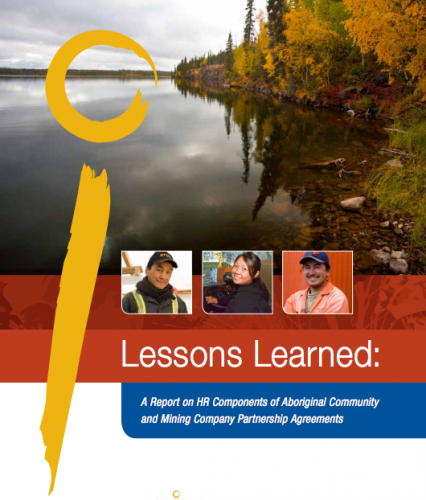Canadian mining companies and Aboriginal communities have negotiated and implemented Impacts and Benefits Agreements (IBAs) and similar agreements for a number of mining projects over the years. Through components of these agreements, companies and communities have developed mechanisms for working in partnership to provide employment and other economic benefits for the Aboriginal people living in the area of the mining operation.
Some information about successful practices in IBAs and IBA-like agreements is publicly available. One such source is the 1974 Strathcona Agreement for the Nanisivik lead-zinc mine on northern Baffin Island. Although it was signed by the Government of Canada and Mineral Resources International Limited (MRI), it included initiatives on employment at the mine for the citizens of Arctic Bay; it was, in effect, the first IBA. A monitoring committee provided public information about the performance of the employment section of the Strathcona Agreement — providing valuable information to guide other mining companies and communities seeking to develop similar agreements.
With a few exceptions, however, the terms of most of the IBAs in effect today are confidential. This makes it challenging to fully understand what constitutes a successful human resources (HR) strategy for an IBA, so that future negotiators have knowledge to achieve “win-win” outcomes. To build a greater body of information in this area, the Mining Industry Human Resources Council (MiHR) has commissioned this research study on Lessons Learned on HR Components of Aboriginal Community and Mining Company Partnership Agreements as part of a larger project called SHIFT: Changing the Face of Canada’s Mining Industry.





